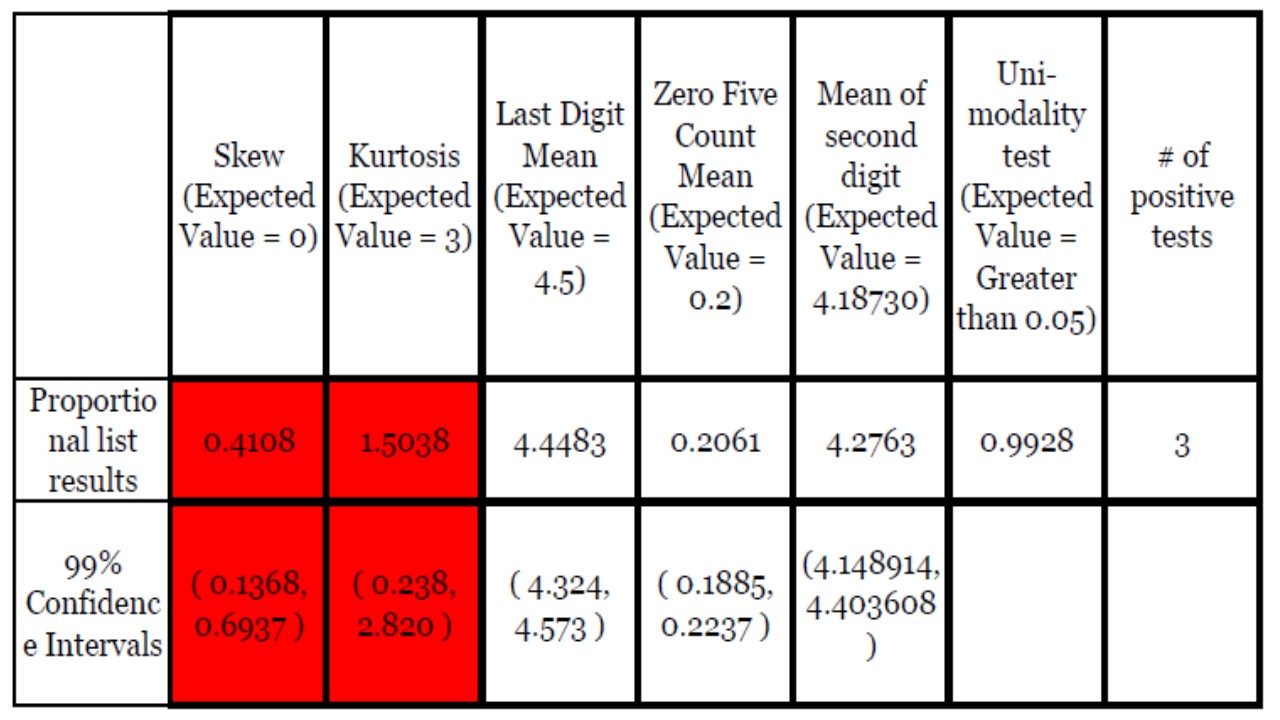In order to help monitor the fidelity of the October 2016 parliamentary election results, CRRC-Georgia has carried out quantitative analysis of election-related statistics within the auspices of the Detecting Election Fraud through Data Analysis (DEFDA) project. Within the project we used methods from the field of election forensics. Election forensics is a field in political science that attempts to identify election day issues through looking at statistical patterns in election returns. This blog post reports the results of our analysis of the 2016 proportional election results. The full report of the analysis is available here.
Our analysis suggests that the results of the 2016 elections were roughly equivalent to the 2012 proportional list elections.
Before going further into the results, two caveats and a note on methods are needed. To start with the two caveats:
-
- Results are probabilistic. A test may return a statistically anomalous result, and this suggests that a given result is highly unlikely to have occurred by chance alone. The way in which we calculate the test statistics is likely to provide 1 false positive for every 100 tests performed.
- Results are probabilistic. A test may return a statistically anomalous result, and this suggests that a given result is highly unlikely to have occurred by chance alone. The way in which we calculate the test statistics is likely to provide 1 false positive for every 100 tests performed.
-
- If a test does suggest a statistical anomaly, it does not necessarily mean that election-related malfeasance caused the result, but that it may have. Statistical anomalies can be caused by benign activities such as strategic voting or divergent voting patterns within a region. Electoral malfeasance does often cause a positive test result, however. Hence, substantive knowledge and judgment of each positive test are required to determine whether malfeasance actually did occur.
When it comes to methods, to be frank, they are relatively complex. Rather than dive into the details here, we recommend that interested readers see Hicken and Mebane, 2015, here. Below we present the results of the following election forensics tests:
-
- Mean of second digit in turnout;
-
- Skew of turnout;
-
- Kurtosis of turnout;
-
- Means of the final digit in turnout;
-
- Frequency of zeros and fives in the final digit in turnout;
-
- Unimodality test of turnout distribution.
Results
In 2016, three of the six tests were set off:
By comparison, in 2012 two of six tests were also set off. However, one test – of the second digit mean – was exceptionally close to being set off. Due to the nature of the method – bootstrapping uses resampling with replacement – this test just as well could have been set off if run again.
Given the borderline nature of the 2012 tests, providing a conclusive comparison of the two elections is somewhat difficult. However, since the test results are roughly equivalent, the tests are indicative rather than definitive, and the elections by most accounts have been considered broadly free and fair, despite having clear issues, and the 2012 elections were considered to be broadly free and fair, despite also having clear issues, we consider the 2016 election results to also be broadly free and fair.
Note: The DEFDA project is funded by the Embassy of the United States of America in Georgia, however, none of the views expressed in the above blog post represent the views of the US Embassy in Georgia or any related US Government entity.


